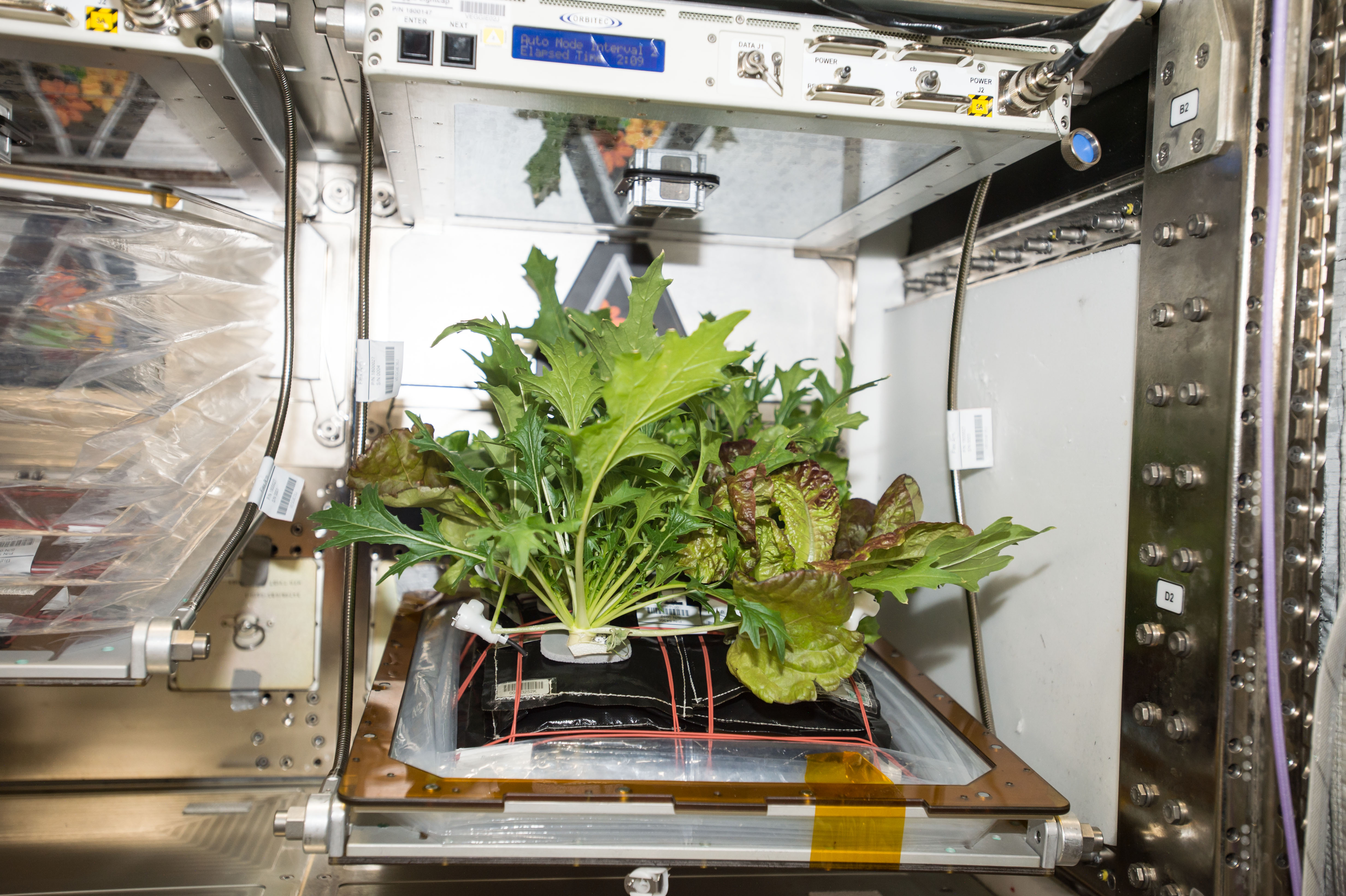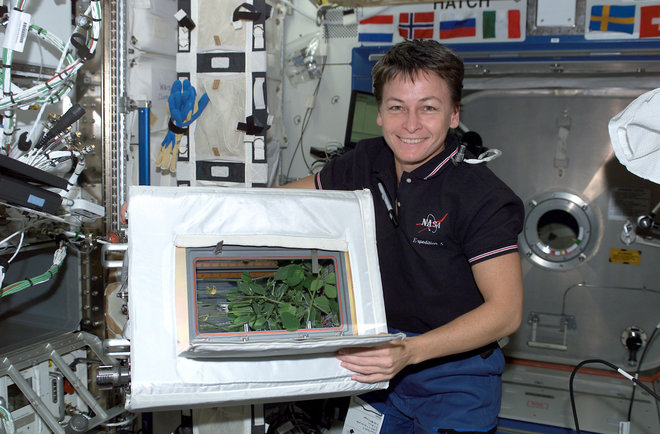Space Salad: Astronauts Harvest 3 Different Crops and Try New Gardening Tech

Astronauts have green thumbs, too!
For the first time, an International Space Station project is growing three distinct plant crops simultaneously in space. And just a few days ago, crewmembers installed the largest plant-growth system on the station.
Space gardens can be psychologically and nutritionally beneficial to the crewmembers who spend months in microgravity monitoring experiments, making repairs, and doing it all far, far away from loved ones.
On Friday (Oct. 27), space station crewmembers harvested their sixth batch of leafy life- forms from experiment VEG-03D in the Vegetable Production System (Veggie). Astronaut Joe Acaba clipped only about half of the greens in a technique called cut-and-come-again repetitive harvesting, allowing the crew to eat future yields of those plants, NASA officials said in a statement.
"Joe Acaba harvested Mizuna mustard, Waldmann’s green lettuce and Outredgeous Red Romaine lettuce, providing himself and his crew with the makings of a salad — once they top it with salad dressing sent up by the ground crew at Kennedy Space Center in Florida, of course," NASA officials said in the statement.
The mixed crops are intended so crewmembers can benefit from having a variety of fresh produce in their diet, NASA officials added.
To continue improving the space station's garden potential, Acaba installed a new plant-growing system after collecting the harvest.
Get the Space.com Newsletter
Breaking space news, the latest updates on rocket launches, skywatching events and more!

Acaba installed the Advanced Plant Habitat (APH) by following the instructions from the system's project manager, Bryan Onate, and other members of the APH team.
The plant habitat is a fully enclosed, environmentally controlled chamber. The plants grow under red, blue and green LED lights, as well as white LED lights in a broad spectrum. To monitor the project, APH team members have equipped the chamber with more than 180 sensors that can relay information such as temperature, oxygen and moisture levels to the Kennedy Space Center in Florida.
Once the feeds of the Plant Habitat Avionics Real-Time Manager (PHARMER show that APH is operating correctly, space station crewmembers will initiate the growth of the new plant chamber's test crops.
If all goes well, the space garden will soon feature Arabidopsis — small flowering plants related to cabbage and mustard — and dwarf wheat.
Follow Doris Elin Salazar on Twitter@salazar_elin. Follow us @Spacedotcom, Facebook and Google+. Original article on Space.com.
Join our Space Forums to keep talking space on the latest missions, night sky and more! And if you have a news tip, correction or comment, let us know at: community@space.com.

Doris is a science journalist and Space.com contributor. She received a B.A. in Sociology and Communications at Fordham University in New York City. Her first work was published in collaboration with London Mining Network, where her love of science writing was born. Her passion for astronomy started as a kid when she helped her sister build a model solar system in the Bronx. She got her first shot at astronomy writing as a Space.com editorial intern and continues to write about all things cosmic for the website. Doris has also written about microscopic plant life for Scientific American’s website and about whale calls for their print magazine. She has also written about ancient humans for Inverse, with stories ranging from how to recreate Pompeii’s cuisine to how to map the Polynesian expansion through genomics. She currently shares her home with two rabbits. Follow her on twitter at @salazar_elin.









